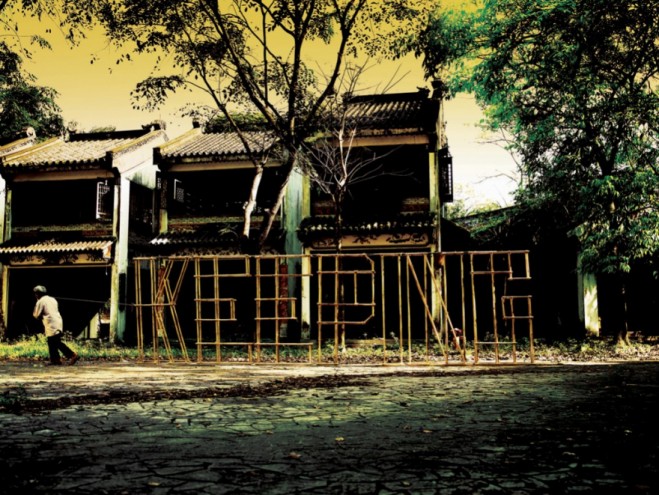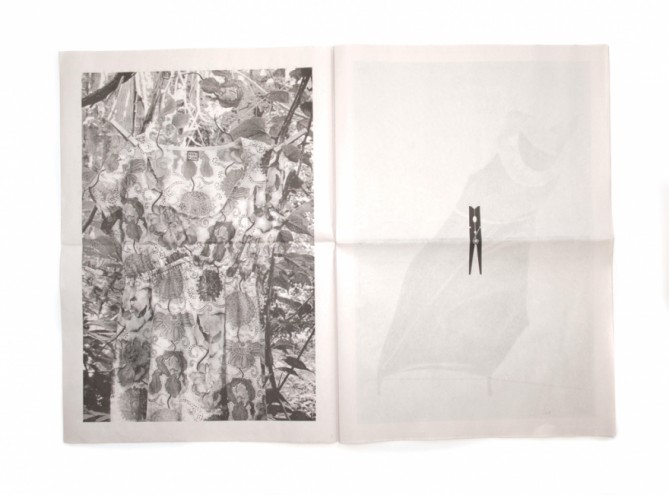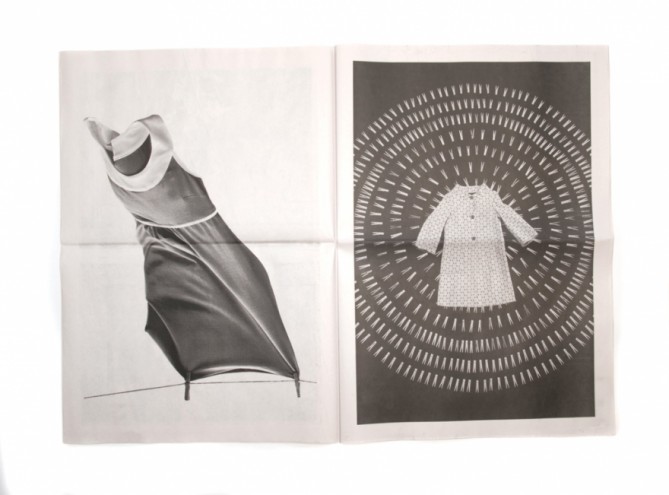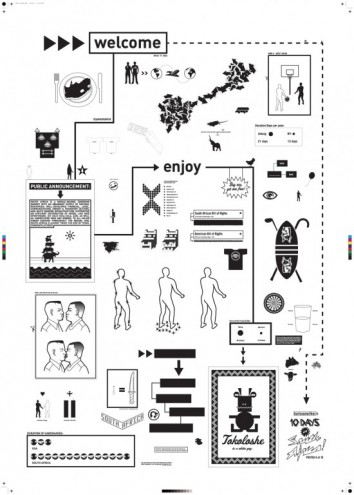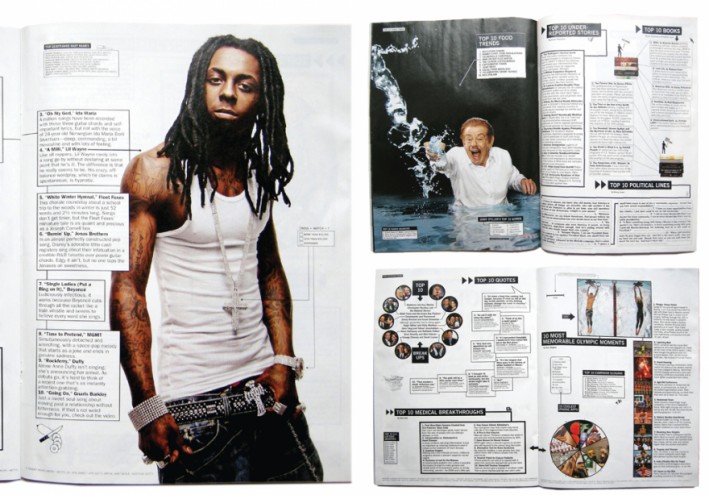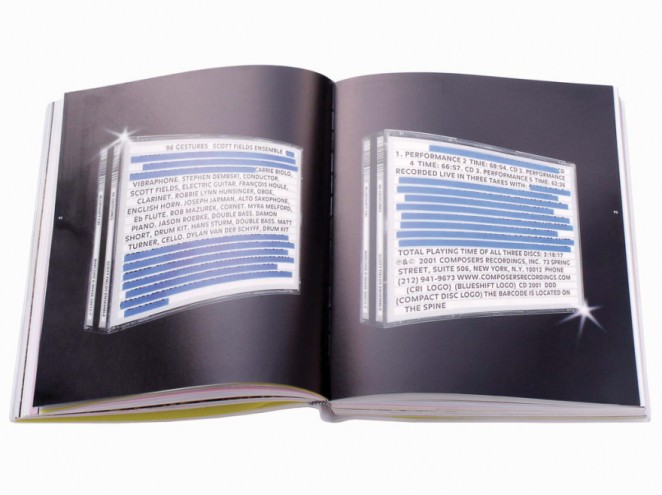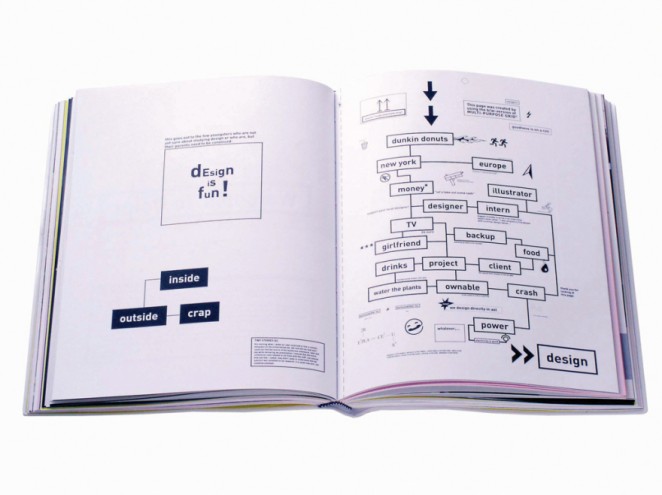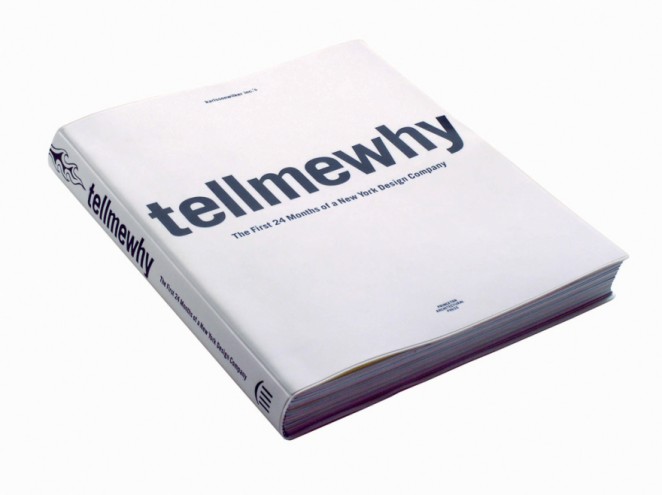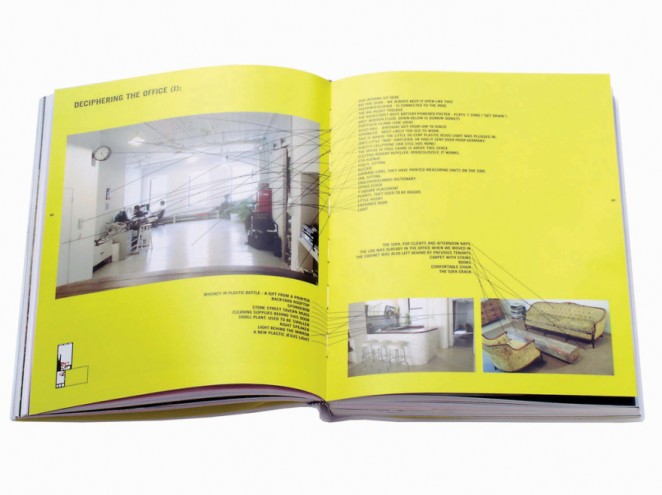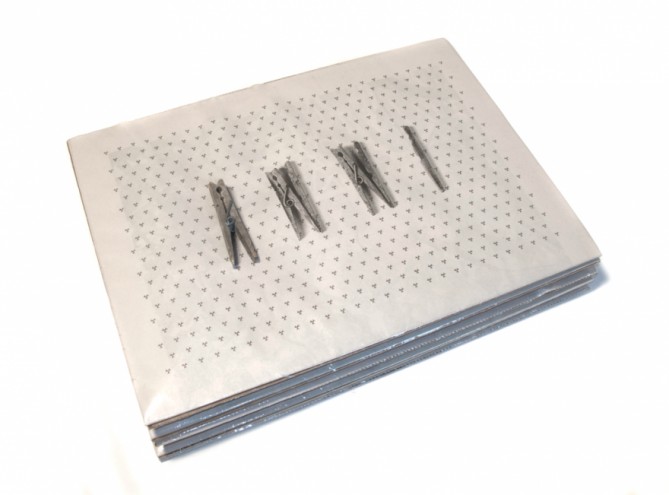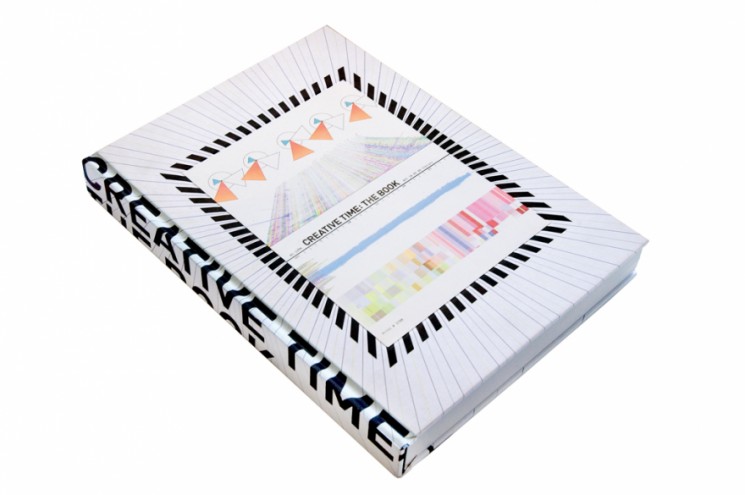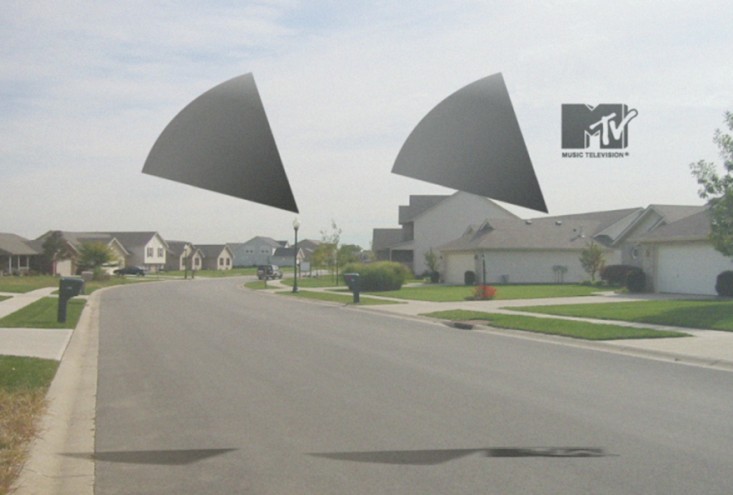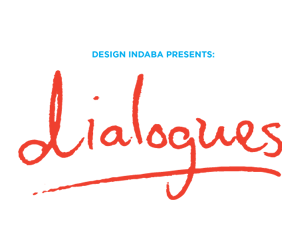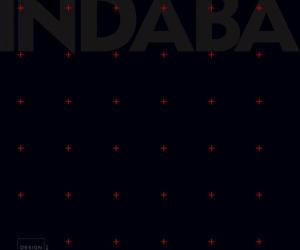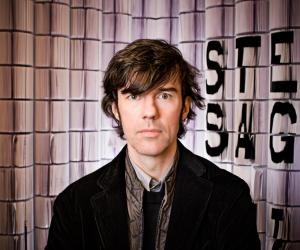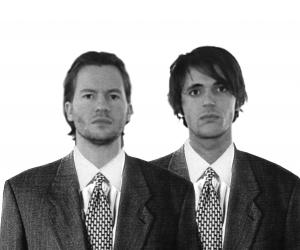Part of the Project
First Published in
Jan Wilker: Let’s start with something very simple. What hobbies do you have?
Hjalti Karlsson: I almost feel like my hobby is my life. My life revolves around the office and then my family. I mean I go to the gym once in a while…
Stefan Sagmeister: Hobbies are for people that hate their jobs, because you need something to compensate for something that you don’t really feel like doing. In my case, I don’t hate my job and never really had the need to make a little wooden airplane over the weekend or do Aquarelle paintings, or what not, because the energy that I need to put into things that I love and really interest me, I can get rid of in the studio. But I did used to do running.
Jan: Yeah, the only thing that I do is that I play tennis in the mornings. That is my one and only hobby.
Hjalti: What role does doubt play in your life as a designer?
Stefan: When I was working by myself, I thought doubt was a pain in the arse, because there was just this constant self-doubt and questioning all the time. It was a pain and it is very difficult to say if it had a positive influence on projects or not. I really can’t say if the project actually became more refined or more carefully selected because of the constant questioning. But as soon as I started working with people, this became much easier. If you are by yourself, you can spend two hours moving a headline around. If someone is there that you work with and that you trust, after a quick question, you can move on.
Hjalti: This doubt factor is the same for us. We can always bounce things off each other. In my case doubt only really comes up when I am working by myself.
Jan: How is the relationship in your office towards the people that work with you? Is it like with equals, like Hjalti and myself? Or is it more like teacher and student, where you give them an assignment and you work with them on the result?
Stefan: It depends on the people that work with me. With some of the interns, yes, it is teacher-student. But with my designers, all three of us work separately and together on projects. If there is a difference of opinion, then it is definitely me who has the last word, but I take the other opinions very seriously. My desire to control everything has became much less over the years. It is much easier to let go – I don’t have to come up with the idea.
Jan: We never worked and lived in the same space and I am pretty sure that I could not do it. You worked like this for a while and now you have separated it?
Stefan: Ja. Both were fine. I was thinking of doing this for a long time and never quite made the move. Now that the move is made, there are clearly a couple of advantages to having it separated. I mean, it was never possible for anyone to work late or over the weekend. Or, let’s say I might be done by six and could just go home, but instead of just sitting on the couch and reading something, I might have done some other work, filled out some forms or things like that. When I did it in the beginning, I was forced into it by real estate. I just happened to find an apartment with the space that allowed for both. I was very scared of that. I had seen design companies in Vienna where the home and office were at the same place. The designers would hang out in their bathrobes and work every night until four in the morning. So I was very strict with myself about not working on the weekends or in the evenings.
Jan: We have been in the same setup basically for ten years. And we have not really planned anything in advance. Every January we go out for a drink and we renew our vows: “You want to do this for another year?” I think that this was necessary after the first three years because it was so stressful, painful and just emotionally taxing. We thought that we just needed to keep it very light. We cannot – we shouldn’t – be married to the studio as if our lives depend on it.
Hjalti: Do you have this? In our case, we have never had: “In three years we are going to be this or we are going to have this and this…” Do you have these longer term goals?
Stefan: I think it comes through the rhythm of my sabbaticals, when I think: "What am I going to do next?" When I opened up, I knew that the goal was to be a designer for the music industry. And then after seven years, after the first sabbatical, I changed that and wanted to do something more social. I got rid of the music industry stuff, but added a corporate component to get some money in and do a self-initiated thing. And because of the sabbatical, I’m now going in that direction for the next seven years.
Hjalti: Do you still work the same? Do you start with a sketch and a concept? I guess in our case we often just start on the computer, and just do something and it happens.
Jan: Yes, we do make things before thinking, which is often not very effective, but it does surprise us; it is basically opposite to what the traditional process is.
Stefan: In many cases we still do start with a little sketch and then a bigger sketch and then you figure it out or execute some of it. But I am not necessarily convinced that this is the only way to do it. I do that because that is how I have learned it, and here and there I basically force myself to look at it from a different point of view.
Jan: For me, coming to New York with my European conceptual background, I very quickly wanted to explore more than that. A more unsafe way of designing where you can end up anywhere, even in very bad places. Then the week that you spent on it is completely useless. You know, when you just play, play, play, experiment and, in the end, you just say it did not work out. We like to work with all these different sorts of software and spend a lot of time with these tools, which is something that our teachers always warned us against, but I think that they were completely wrong. I mean they really didn’t understand. I think that design is more and more of an anomaly, and the younger generation is even crazier in that respect.
Stefan: I read an interview in the New York Times with Robert Rauschenberg about how he thinks that ideas are bad. To have an idea by itself is a bad thing. If he has an idea then it is either something that he has seen before or that he has done before. So if he has an idea, he goes for a walk to get rid of that idea, because he basically just wants to explore and have uncertainty of the exploration as part of the project. For the first time, I tried to work that way deliberately. For example trying to do CD covers in four hours and just seeing what comes out. Not sitting down and first making a sketch, but putting the music on, letting the music whatever, thinking at normal speed and then just going for it. Whatever tool was lying around was used for it.
Jan: We also do the real-time design things. It looks like we have another one coming up. Basically, we will go to Jerusalem for two weeks and every day for two weeks, we will produce a piece of design, like what we did in South Africa.
Stefan: I never saw the stuff that you did in South Africa. Did it come out nice?
Jan: Yeah, I mean it is so spontaneous and some are really bad. Some days it’s not even about bringing the idea into reality – some days it is just not there. Then you would need three or four more days to push it, but you only have one day. Part of the day is walking around talking to people and looking, and then you only have two hours to put something on paper.
Hjalti: So we know from day one that some of the things are going to be so-so.
Jan: What is your favourite project in the past 15 years – if you take just one project?
Stefan: I would say Things I Have Learned in My Life So Far. It’s an easy pick because it’s 20 projects under one umbrella. Yet it was very satisfying on so many levels. Most of those projects were fun to do and even putting them together again into a book was fun. We liked the publisher who was a great editor and the book was so easy, and the project was successful. That was good. I like this thing of it clearly being a graphic design project on the one hand, but a self-generating project on the other hand. It was all done with clients’ spaces and commission, producing a strange sort of hybrid project.
Jan: Some people were also negative.
Stefan: The only really negative feedback about the show that I am aware of came from England. It was one of those things where no one that was negative on the blog had actually seen the show. There was much better feedback from people in New York who had actually seen the show.
Hjalti: Are you bothered by it if there is some negative reaction?
Stefan: It depends if someone comes up to me and says: "I really did not like the thing that you did". I think that is correct and that can be very helpful. An anonymous blog with someone slagging it off, is sort of odd because it is actually hurtful without giving me the possibility to learn something from it. I actually liked Douglas Coupland’s article. I thought that he had some valid points and I thought it was well written. This guy had clearly thought about the exhibition and had an opinion that I could follow. If I look at blogs, which I try not do too often, there may be 15 positive comments and two negative ones. Of course, the two negative ones are the ones that I latch onto, but I still don’t learn anything because the kind of negative comments are not meant for me to learn something. I think we all as humans are inclined to take negativity more seriously than positivity. This is the reason why all the news is negative and all the attempts to write a positive newspaper or a positive TV news show fail, because we are not interested.
Jan: So you are prepared for criticism when it happens?
Stefan: We will see… I will probably still hate the criticism.





